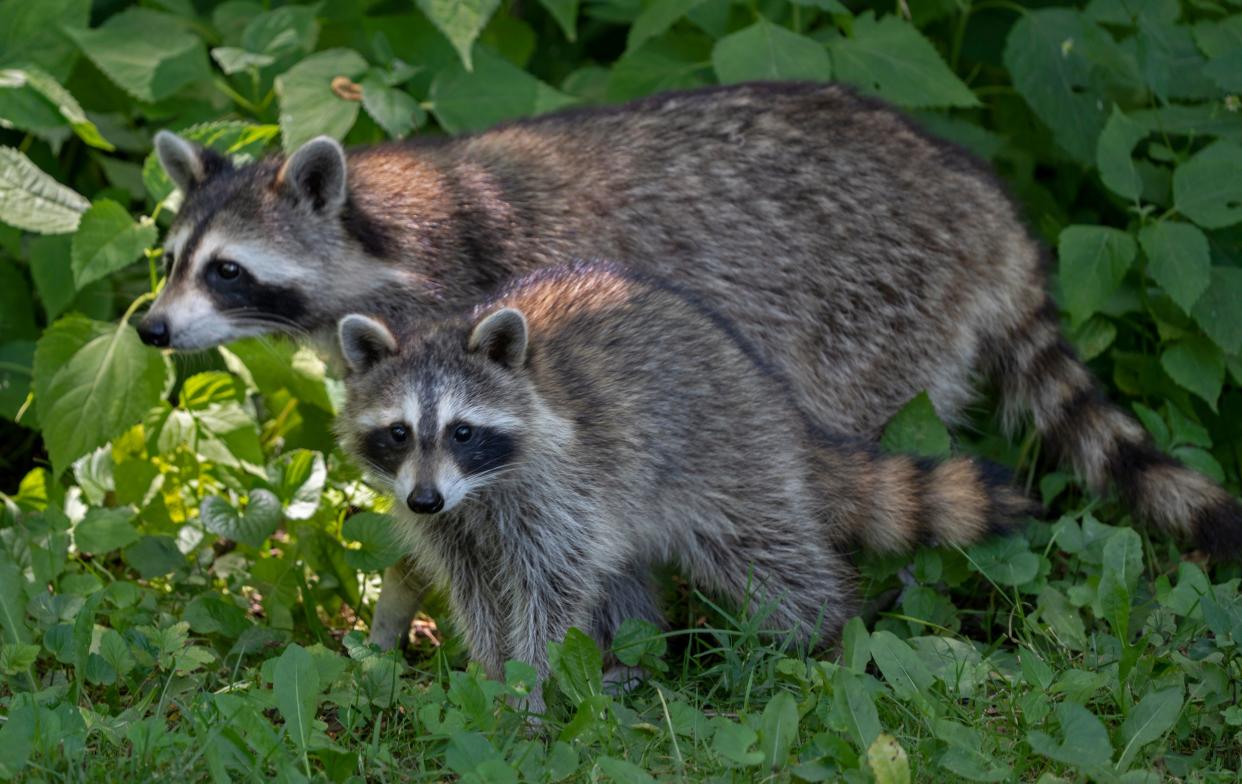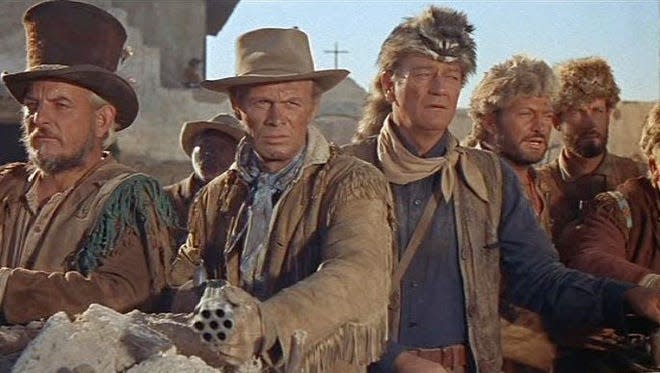With humans and raccoons living so close, conflict nearly unavoidable

Most people don't love – or even much like – the idea of living alongside raccoons.
In their defense, raccoons, though nocturnal, typically don’t rattle their neighbors with fireworks for half the summer. Nonetheless, they undeniably display other shortcomings odious to the civilized.
Plunderers of trash cans, spreaders of reeking garbage, squatters attracted to attic lofts, claim jumpers on the spaces beneath patio decks, pilferers of food meant for cats and dogs, is there reason to doubt why raccoons come equipped at birth with masks?
Gardening: Coexisting with critters takes ingenuity
Raccoons on the premises are about as welcome as robocalls on a cell phone, though racoons, unlike dialers for dollars, can be eradicated, at least for a time, by pest control.
People, to be objective, might fairly be viewed by raccoons as a pest. Consider that land once pretty much theirs is nowadays pretty much ours. Roads littered with small, furry corpses underline that reality each summer.
Raccoons can kill people, though it doesn’t happen often. When it does, disease or happenstance is in play and not negligence or premeditation. Occasionally, one has to suppose, a raccoon tangling with electrical wiring causes a house fire at the cost of its own fleeting life.
But when it comes to burning houses, it’s not raccoons playing with matches, falling asleep with a cigarette dangling from relaxed lips or trying to save a few dollars by rigging wire outside an electrical box.
Earlier this year a resident of Vicksburg, Mississippi, in an attempt to burn out a raccoon squatting in the attic, set his house on fire. The temporarily homeless raccoon was last seen climbing a tree, no doubt happy to be out of harm’s way.
A Quora question found on the Web asks, “How many angry raccoons would it take to kill an average-size male human?” Preposterously, the answer given is two to five, though the final number would probably depend on the extent of their frenzy, the steadfastness of their resolve, the size of each perp and any previous training.
Naturally, one wonders how many it would take if the raccoons weren’t angry.
More to the point, what reasons do raccoons really have to be angry?
Well, there are a few historical matters.

Coonskin caps (as seen on black-and-white television) supposedly were de rigueur as head adornments back in Ohio’s pioneer era. Maybe he was misquoted, but Lancaster native Gen. William Tecumseh Sherman once proclaimed the only good raccoons he ever saw were dead. And early in the 20th century, raccoons died in untold numbers in order for male college students to strut fashionably in coats made from their lush pelts.
Raccoons still fetch a price in this age of synthetics.
A total of $4,338.66 changed hands for the 1,351 pelts sold during an Ohio State Trappers Association auction in March. The average pelt fetched $3.25, the most expensive $7.75 and the least expensive two bits.
Trappers, along with a few hunters, will be back at it come fall. Vehicles and pest control specialists will do what they do to adjust raccoon numbers in the meantime.
As usual, raccoons will test human patience. Humans will test raccoon resiliency.
Numerous creatures that were here before us have not fared nearly as well as raccoons. For all their faults, raccoons deserve a little gratitude for keeping nature as close as the nearest garbage can.
This article originally appeared on The Columbus Dispatch: Outdoors: Which is the real pest? Raccoons or humans?

